Remote prefecture educates itself on ways to prosperity
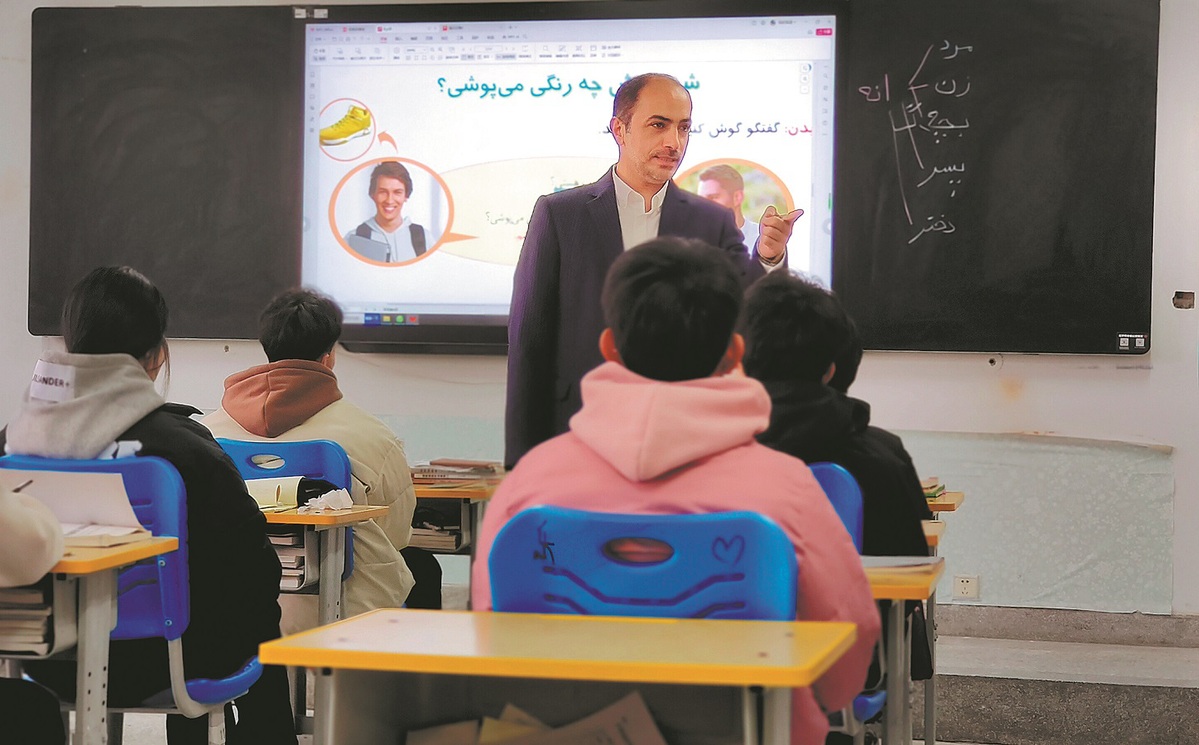
Morteza Akbari gives a lesson on Persian at Linxia Modern Vocational College. CHINA DAILY
With its culture and history inexorably linked to the Silk Road, the Linxia Hui autonomous prefecture in Gansu province was an easy fit for Iranian schoolteacher Morteza Akbari and his family.
The 38-year-old is from Iran's Qom province, which was twinned with the prefecture in 2011 and has been boosted by the Belt and Road Initiative. Morteza taught Persian at Mustafa International University in Qom before he was invited to take a position at Linxia Modern Vocational College.
After seven years at the school, his bonds with the students are so strong that when a magnitude 6.2 earthquake struck the region just before midnight on Dec 18 last year, many phoned him for reassurance.
His phone began to buzz, and he was inundated with messages from his panicking students. "I'm so scared, Mr Morteza. Will I die?" one asked him.
Coming from Iran, a seismically active country, Morteza was convinced that the earthquake's most dangerous moments had passed. "You'll be fine. You have very sturdy buildings and an efficient government. You can trust them," he reassured the student.
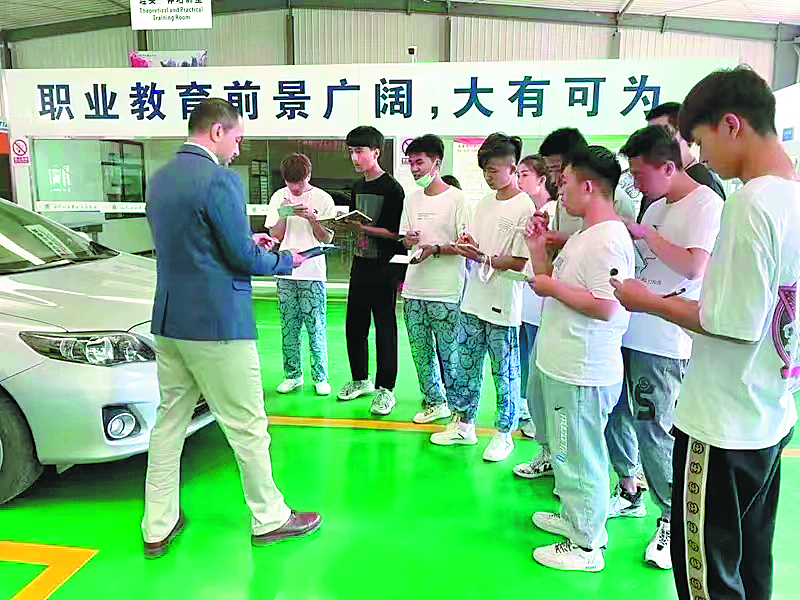
Students get scenario-based language training from Morteza. CHINA DAILY
A different school
Few higher education institutes in China, including foreign language universities, offer Persian as part of their curriculum, let alone a vocational school in a remote and underdeveloped region of Northwestern China.
But, Linxia is a special prefecture that requires different solutions.
Home to 41 ethnic minority groups that account for the majority of the population, the prefecture shook off poverty at the end of 2020 during China's poverty-alleviation efforts. However, it has always tried to build connections with the global community, whether in ancient times as a crucial trade hub on the historic Silk Road, or in modern times as it explores outside opportunities in the education field.
Built in 2015, Linxia Modern Vocational College is the first and only vocational college in the prefecture.
Su Hua, deputy director of the college, said it has developed rapidly in recent years, with the number of students and faculty members expanding from 2,000 to 10,000. The college now offers 29 majors, including medical science, Persian and Arabic. "Boosted by strong policy support, vocational education is going through a golden period," she said.
As it forges its own education path, the prefecture has also found ways to help boost the prospects of students from ethnic groups, by addressing urgent social issues such as youth employment, sustainable economic growth, and cultural and environmental preservation.
Since 2020, with the support of the national Education Ministry, the province has striven to achieve a "skilled Gansu". Over the past three years, the provincial government has set out policy measures aimed at achieving a comprehensive and "world-class" vocational education system in the province.
"Our goal is to build a model vocational college for China's ethnic minority areas," Su said.
"Linxia prefecture has a built-in advantage for language cultivation," she said. "It used to be a stop on the ancient Silk Road, so people here are good at communication and business and are gifted in language learning."

Students majoring in Persian receive training in interpretation at Linxia Modern Vocational College in Linxia. CHINA DAILY
More life choices
Wang Mabin, one of Morteza's students, has benefited from the college's development over the years.
"The facilities and the campus environment have improved significantly since I came here," said the 19-year-old. "We have the most advanced translation and interpreting equipment in our class, as well as increasing overseas study opportunities."
Two years ago, he failed his high school entrance exam.
He then entered the "2+3 program" at the college, which allows him to study two years of secondary school then undertake three years of vocational education. "Were it not for this school, I would have had to learn to make a living like many youngsters my age did in the past," he said.
Under the nation's nine-year compulsory education policy, poor performances in the high school entrance exam, or gaokao, take away the opportunity for some junior students to attend college.
"College entrance exams still carry a lot of weight for Chinese parents. But the path is so narrow and crowded. Many good kids deserve a better life. Vocational education offers an alternative option," Wang said.
Ma Jinxiao, 20, has studied Persian for five years in the same program, which he said has equipped him not only with language skills, but built his self-confidence.
"I used to be very shy, but I love studying. The vibrant school life helped me open up," he said.
Ma has often been the top student in the class and wants to study abroad. He is due to graduate in June, but the earthquake, which damaged the family home, has changed his plans.
"As the youngest son, I need to stay by my parents' side and shoulder my responsibility," he said.
He has now decided to study teaching in the province's capital city, Lanzhou.
"My ambition is to improve people's educational levels in my hometown. Five years of study have made me see there's still a gap between here and more advanced areas," he said.
Gao Lei, 23, graduated from the vocational college in November, 2022, and has realized his goal to work as a professional translator in Iran. He encouraged the current crop of students to cherish their time at the school and lay a solid linguistic foundation.
"This is our goal — to tailor our education and help the students find their place in society," deputy director Su said. "The reform of vocational education is systematic work requiring longtime joint efforts."
Morteza starts to become emotional when he talks about how vocational training is changing the lives of his students. On the wall of his classroom is painted an inspirational sentence in both Persian and Chinese that read "Language is the key to the world".
"I'm happy for them that they are walking out of this remote place toward a bigger world," he said.
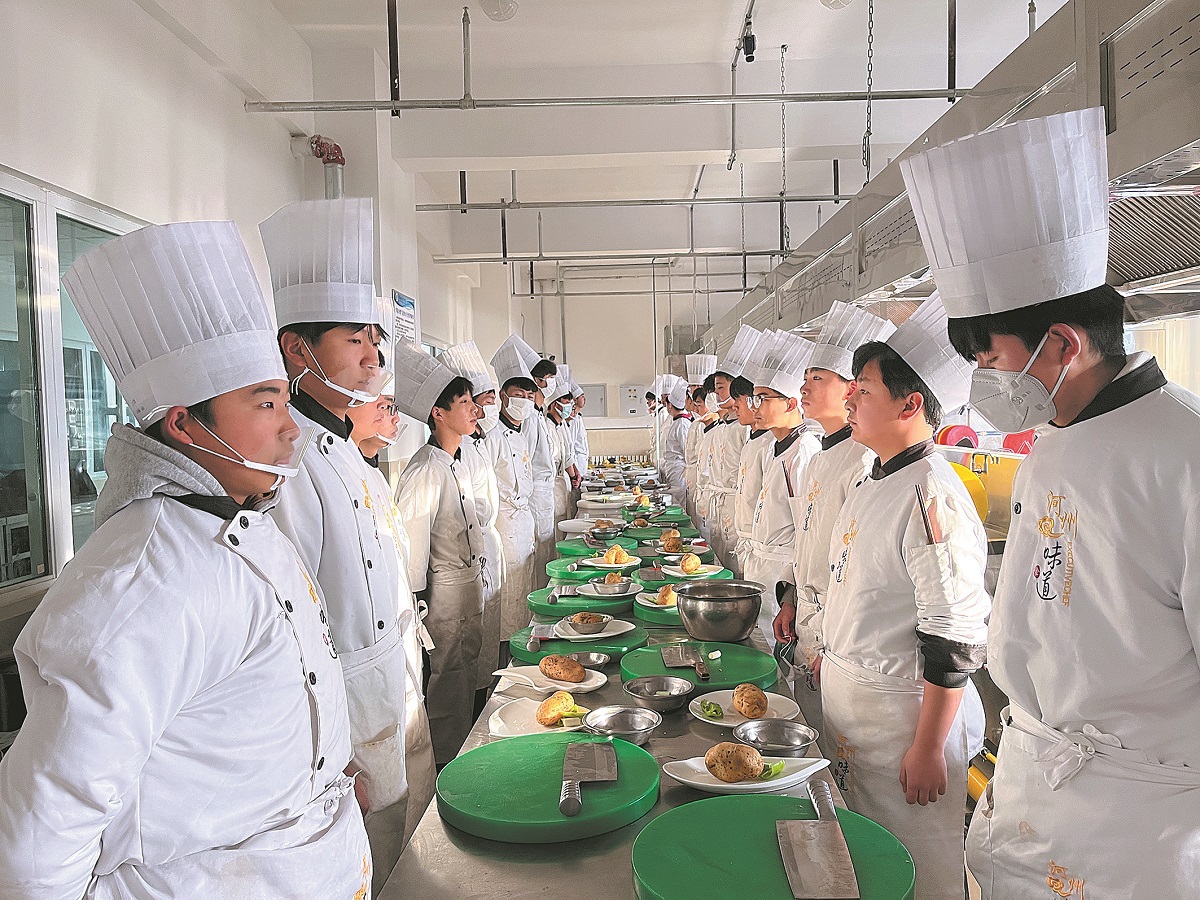
Students of the culinary institute of Linxia Modern Vocational School receive lessons from a local catering group. CHINA DAILY
Talent pipeline
Linxia is a small basin that is not blessed with large amounts of mineral resources or big manufacturing enterprises. However, the population density of Linxia city, the capital of the prefecture, is equivalent to that of Shanghai.
"We do have a demographic dividend, but there are no large enterprises to solve employment issues. Developing vocational education is basically a way for us to solve employment, agricultural and population issues," said Chen Yanhua, director of the vocational education department of the regional education bureau.
With tourism as the pillar industry, Linxia has been actively developing its abundant cultural and natural resources.
Making its unique ethnic cuisine, for example, demands a large amount of manpower, which has been greatly supported by vocational training. Linxia Modern Vocational College and the prefecture's largest catering group, Baihua Jiayuan, jointly built a culinary institute in 2021 to train students and provide them with internships and business skills.
Chen said the training model offers more jobs for culinary graduates and related majors, attracts students through employment opportunities, and establishes a virtuous cycle of cooperation between schools and industries.
"It is not only basic training to do a job or ensuring employment upon graduation. Through this connection, we also aim to enhance the professionalism, standardization, and branding of the culinary industry," she said.
For years, Linxia has been exporting agricultural products such as freshly cut flowers to Central Asia and Europe. Last year, the college cooperated with the Linxia Baiyi Group, a major flower exporter, to establish the Baiyi Industry Academy.
By introducing corporate capital to majors including livestock, agriculture, forestry, and logistics, the college has become a talent pipeline for the agricultural industry.
Most of the students come from impoverished ethnic minority families, and many of them are left-behind children.
Apart from the college, there are seven vocational schools in Linxia, and some of them provide financial assistance for their students. Linxia Guoqiang Vocational Technical School, for example, offers comprehensive free education for students in their first three years, including waiving tuition, accommodation, transportation and other fees.
The number of students studying at vocational schools in Linxia increased from 8,200 at the end of 2018 to more than 15,000 at the end of 2023, according to the local education bureau.
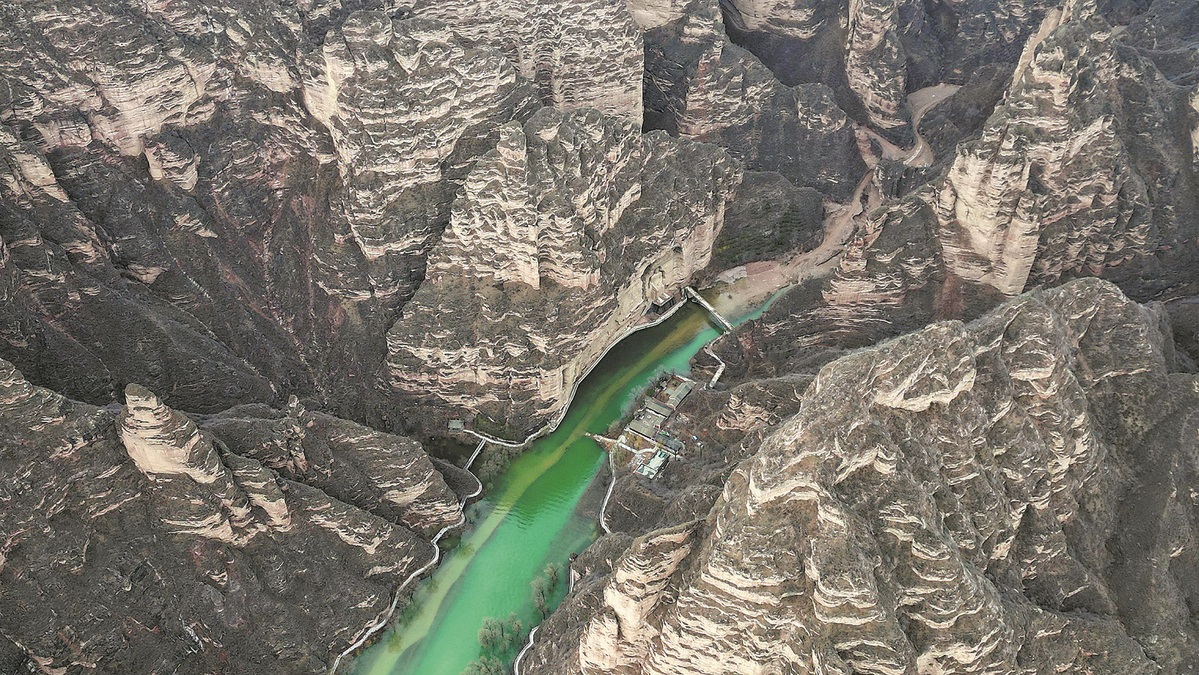
A bird's-eye view of the rare Danxia land formation inside the Linxia UNESCO Global Geopark in Linxia Hui autonomous prefecture, Gansu province. SHI YOUDONG/XINHUA
In tune with the environment
Primary and secondary education in the region is also being developed in accordance with local geographic conditions.
In March, Linxia geopark was listed in the Global Geoparks Network by the United Nations Educational, Scientific and Cultural Organization.
The Linxia UNESCO Global Geopark, with its dramatic landforms, diverse fossils and rich cultural relics, can play a big role in the education of primary and middle school students, said Ma Jun, director of the geopark.
A total of 12 primary and secondary schools are already located within the geopark. "We want to make the most of our geological resources to boost our children's interest in science and their understanding of their hometown as well as the Earth," Ma said.
Xiguan Primary School, located in Linxia's Hezheng county, is one of the 12 geopark schools.
Since 2018, the school has held classes twice a week in museums and at outside locations, so students can conduct hands-on research. Some of the children have volunteered as guides to share their rich knowledge with visitors about ancient creatures or geography.
"The wealth of fossil specimens in our park makes me so proud of our hometown, and I want to share it with my schoolmates and everyone," said Wang Zihan, a fifth-grade student who volunteers at Hezheng Paleozoological Museum and conducts her own research.
Zhang Wufan, another fifth-grader who volunteers at the museum, said her favorite extinct animal is the shovel-toothed elephant. "The big long teeth make it look so hilarious and whenever I pass by the model, it trumpets in a funny way," she said.
Zhang is eager to explain to visitors three-toed horses, and has modeled clay into the shape of the animal at a handicraft school club.
Ma Jiao, who graduated from the school, is now a researcher at the Chinese Academy of Sciences' Institute of Vertebrate Paleontology and Paleoanthropology.
Chang Hui, head of Xiguan Primary School, said the geopark gives his students the opportunity to learn about culture and nature for free. The students are passionate about researching subjects related to the park, he added.
"The children are particularly interested in immersive experiences such as reconstructing scenarios, treasure hunts and exploring fossils. Stepping out of classrooms gets their spirits and brains very excited, and I believe it's more effective than sitting in a room reading books all day."
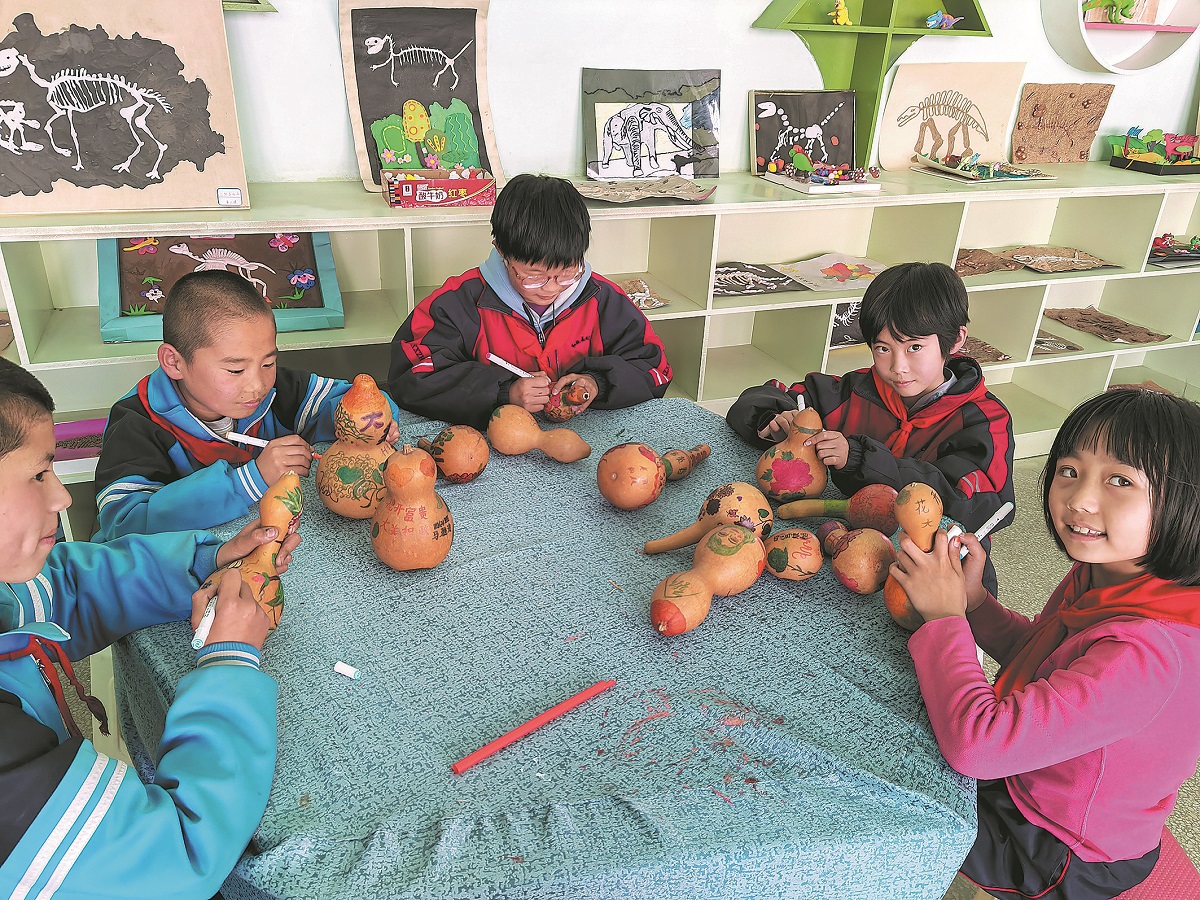
Students from Xiguan Primary School paint extinct animals found in the geopark on gourds at a handicraft club. CHINA DAILY
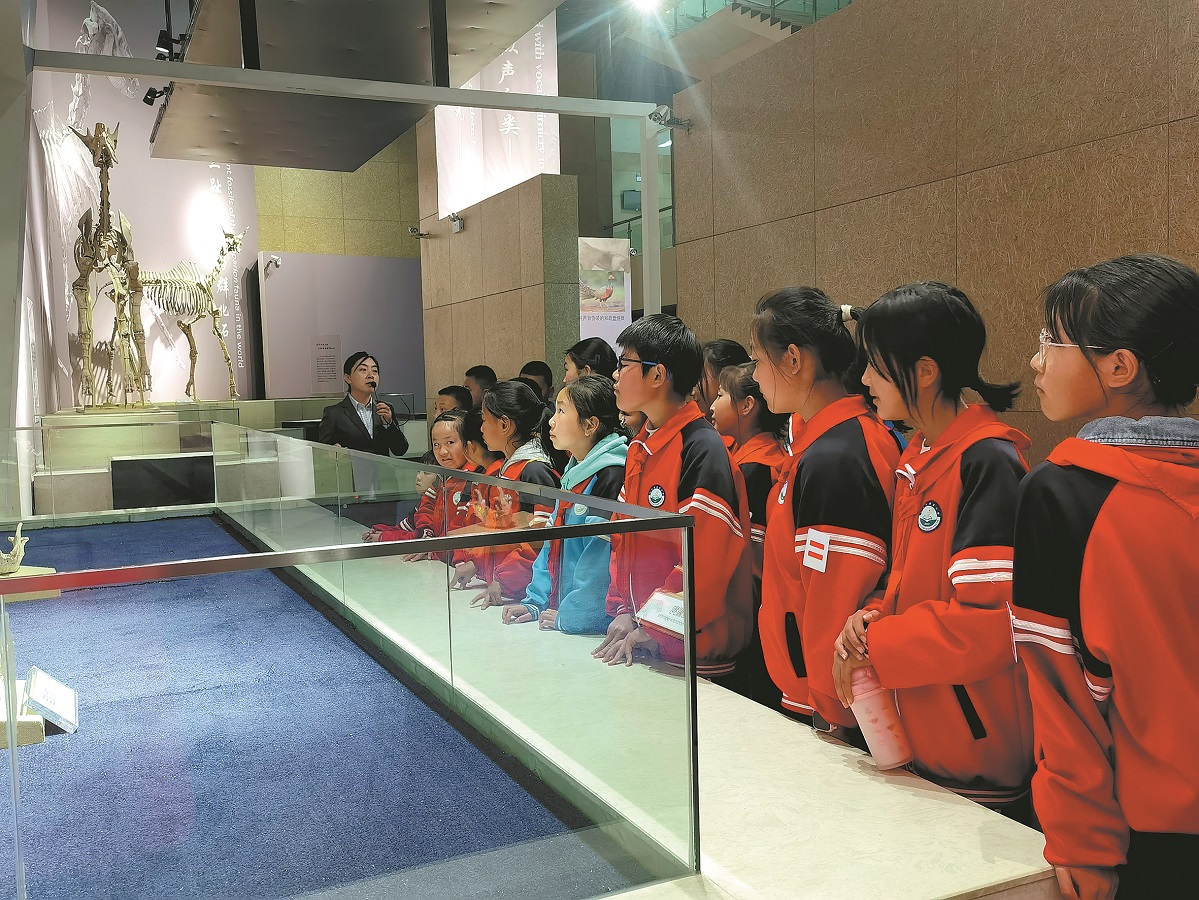
Students of Xiguan Primary School in Linxia's Hezheng county visit Hezheng Paleozoological Museum for research study. CHINA DAILY
Photos
Related Stories
- Chinese, Iranian FMs hold phone talks on Israel-Iran tensions
- Chinese bond turns into family affair
- French baker finds love, home in Zhuhai
- China to make it easier for foreigners to work, study, travel: top legislator
- Culture, driving force in boosting Iran-China ties: experts
- Iran facilitates Chinese tourists' visits to museums
Copyright © 2024 People's Daily Online. All Rights Reserved.









